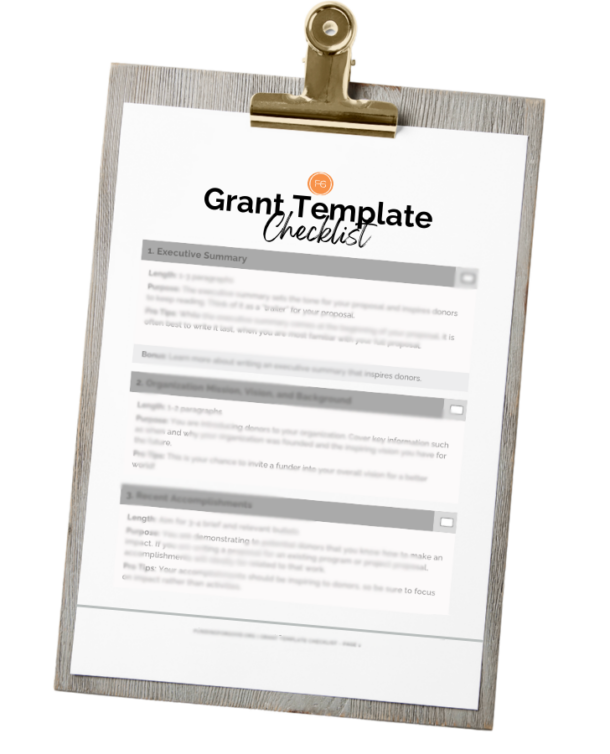Are you ready to launch a new program or make some changes to existing program designs?
Before you get started, it is important to ask, “What is prompting me, or forcing me, to define our program designs now?“
- Are you chasing grant dollars for a new program?
- Has your organization recently been blessed with a generous contribution to expand existing programs?
- Did your organization fall short of fundraising goals?
- Do you find yourself having to choose between making cuts or closing program doors?
- Is a staffing transition creating the need to re-evaluate roles, responsibilities, and resources?
All too often, nonprofits tend to be “reactive” in the program designs process rather than “proactive.” If you are staring down a deadline, you risk compromising both the process and the final product.
Every nonprofit I know that has incredible program designs also has a dream…the dream that one day, the program will be capable of supporting itself. Program designs that are heavily dependent on grants tend to have warped life cycles.
Let’s put this into perspective…
If you sow tomato plant seeds in your garden, make sure they are planted in nutrient-rich soil, water them regularly, and ensure they have plenty of sunlight, you can expect to see small sprouts grow into nice sized plants. In fact, you expect those plants to produce fruit by the end of summer. If you have an especially green thumb, you might even win the blue ribbon at the local fair for your amazing tomatoes!
A practical gardener does not plan for their seed to produce tomatoes in one day or for it to shrink and grow in height randomly each week. The healthiest plants follow the order of nature. They start small and grow bigger based on the environment and support they receive. We expect the survival of the fittest.
Perhaps those of us in the nonprofit world should take a lesson from nature as we develop our program designs. We tend to dream big and expect fruit immediately. Grants often create the illusion that we can bypass all the nurturing and weeding and watering and jump straight into the final harvest. Nonprofits with the good fortune of receiving a grant to fund 100% of their program during its implementation stage tend to struggle the most when they are forced to prune back during the following years. The reality is that grant funds are not, and will not always, be readily available.
Believe me; I’ve been there…
When a program is fully funded by grants, nonprofits are often restricted from, or hesitate to charge a service fee. The community gets conditioned to expect programming at no cost.
Staff is so busy working to produce the grant required results that they often don’t have time to begin sowing into new donor relationships or evaluating long-term sustainability options.
Before you jump into program delivery, I encourage you to take a step back to evaluate your program designs. Funding for Good has created a program design tool to help you structure for success. We also have a helpful Video on Program Designs you may find helpful.
Next… Consider the strategies below as you define new or existing programs:
1. Evaluate program demand
- If program demand is low, ask “Why?” If the reason is lack of interest or another provider does it better, consider eliminating that particular element and focus on other areas.
- If program demand is low due to lack of PR/awareness, work with local experts, media, professionals in the field, potential referral sources to get the word out.
- If program demand is high, evaluate both short-term and long-term capacity. (How many programs/participants can you realistically serve each year?)
2. Evaluate the TRUE cost of your program
- Staff salary
- Fringe benefits- FICA, Medicare, benefits, etc.
- Program materials- educational, office, etc.
- Outreach/PR- cost to design marketing materials, ads, additional P Transportation/Travel- reimbursement for staff mileage, cost to transport program participants/volunteers if applicable
- Technology/Communications- computers, software, IT support, cell phones, iPads, for program staff or usage.
3. Evaluate service fees
- If you do not currently charge for a service, why not?
- What do similar organizations in your region charge for comparable programs?
- What process will you use to create competitive/realistic fees?
Sometimes it is difficult to look at the list above and break it into a specific service fee. It is important to evaluate what other similar programs in your community charge for comparable programs to determine your program’s fair market value.
The following is an abbreviated guideline of how a local STEM program in my community established fees for their new programs:
- Staff time– (planning time + travel time + program delivery time x $25/hr)
- Materials– Average of $1-$3 per participant depending on activity
- Mileage– cost of staff travel at $.58/mile (2019 federal reimbursement rate) Contract help- fee for additional educators for program delivery.
This means a 3-hour program for a group of 40 students might cost $275, or less than $7/student.
Not only is this fee comparable to a visit to the local science center, it also covers all of the true costs related to program planning and delivery!
It is important to remember that not 100% of your program staff time is spent on program delivery. These program fees only cover time staff is planning for or delivering scheduled programs, so you will need to figure out how to pay salaries/fringe benefits that aren’t yet covered through service fees.
Every program is different, so program designs are different. They key is balancing the communities needs with your ability to deliver quality and applicable programs at a competitive price.
Evaluate your program designs and establish a 3-5 year plan for increasing sustainability. You might consider grants, program fees, individual donors, sponsors, or a wide variety of revenue streams in each development stage.
At the end of the day, it is critical that you dedicate the time and resources to set your program up for success. Adopting a proactive mindset is certainly the first step in the right direction!
Using Different Writing Styles Effectively
Strategic Planning: Understanding the PROCESS and the PRODUCT
20 Days to a Larger Donor Base
As always, Keep Growing for Good!


